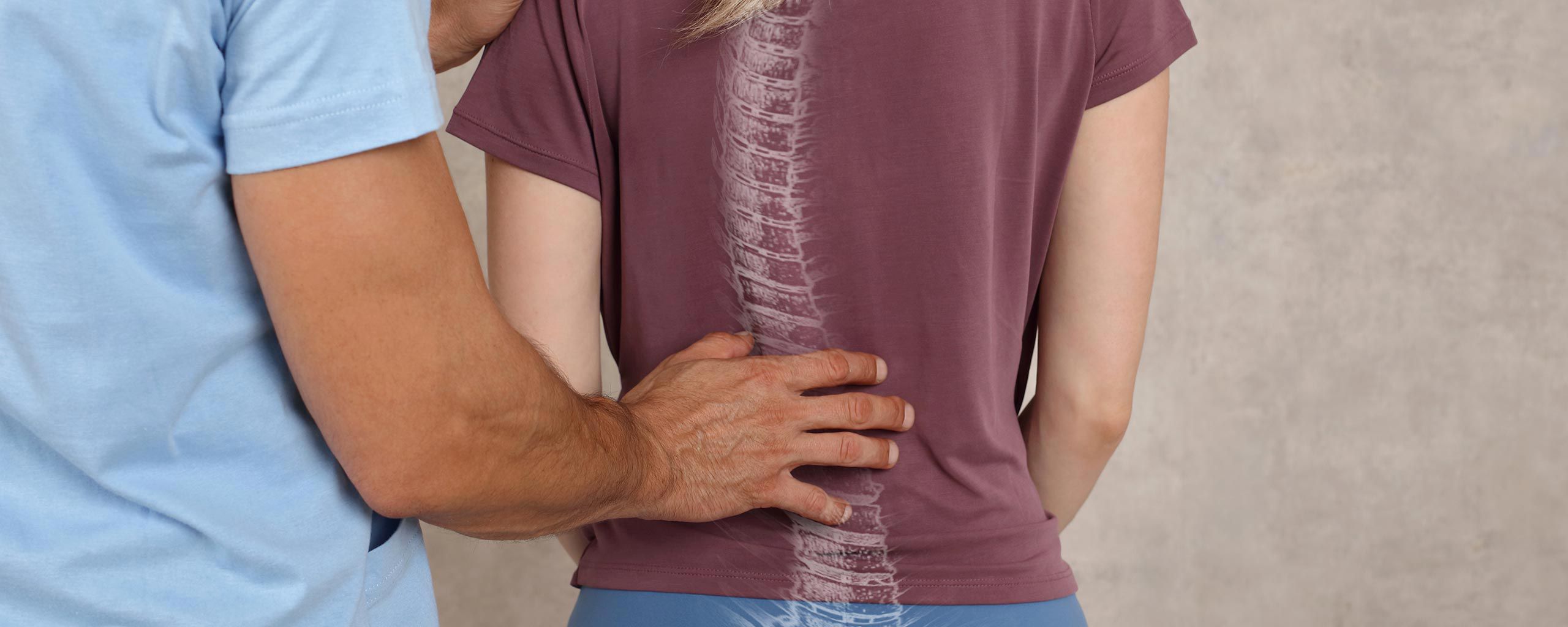Spinal Disc Herniation
Spinal disc herniation is an injury to the cushioning and connective tissue between vertebrae, usually caused by excessive strain or trauma to the spine. It may result in back pain, pain or sensation in different parts of the body, and physical disability. In the majority of cases spinal disc herniation can be treated successfully conservatively, without surgical removal of the herniated material. Initial treatment usually consists of nonsteroidal anti-inflammatory drugs (NSAIDs), but long-term use of NSAIDs for people with persistent back pain is complicated by their possible cardiovascular and gastrointestinal toxicity.
Sciatica
Sciatica is pain going down the leg from the lower back. This pain may go down the back, outside, or front of the leg. Onset is often sudden following activities like heavy lifting, though gradual onset may also occur. The pain is often described as shooting. Typically, symptoms are only on one side of the body. Certain causes, however, may result in pain on both sides. Lower back pain is sometimes present. Weakness or numbness may occur in various parts of the affected leg and foot. It is typically diagnosed by physical examination, and the history of the symptoms.
Sciatica can be managed with a number of different treatments with the goal of restoring a person's normal functional status and quality of life. When the cause of sciatica is lumbar disc herniation (90% of cases), most cases resolve spontaneously over weeks to months. Initially treatment in the first 6–8 weeks should be conservative. More than 75% of sciatica cases are managed without surgery. In persons that smoke who also have sciatica, smoking cessation should be strongly considered, in order to promote healing.
Degenerative Disc Disease
Degenerative disc disease (DDD) is a medical condition typically brought on by the normal aging process in which there are anatomic changes and possibly a loss of function of one or more intervertebral discs of the spine. DDD can take place with or without symptoms, but is typically identified once symptoms arise. DDD can cause mild to severe pain, either acute or chronic, near the involved disc, as well as neuropathic pain if an adjacent spinal nerve root is involved. Diagnosis is suspected when typical symptoms and physical findings are present; and confirmed by x-rays of the vertebral column.
Often, the symptoms of degenerative disc disease can be successfully treated without surgery. One or a combination of treatments such as physical therapy, anti-inflammatory medications such as nonsteroidal anti-inflammatory drugs, traction, or epidural steroid injection can provide adequate relief of troubling symptoms.Surgery may be recommended if the conservative treatment options do not provide relief within two to three months for cervical or 6 months for lumbar symptoms. If leg or back pain limits normal activity, if there is weakness or numbness in the legs, if it is difficult to walk or stand, or if medication or physical therapy are ineffective, surgery may be necessary, most often spinal fusion.
Spinal stenosis
Spinal stenosis is an abnormal narrowing of the spinal canal or neural foramen that results in pressure on the spinal cord or nerve roots. Symptoms may include pain, numbness, or weakness in the arms or legs. Symptoms are typically gradual in onset and improve with bending forwards. Severe symptoms may include loss of bladder control, loss of bowel control, or sexual dysfunction.
Causes may include osteoarthritis, rheumatoid arthritis, spinal tumors, trauma, Paget's disease of the bone, scoliosis, spondylolisthesis, and the genetic condition achondroplasia. It can be classified by the part of the spine affected into cervical, thoracic, and lumbar stenosis. Lumbar stenosis is the most common, followed by cervical stenosis. Diagnosis is generally based on symptoms and medical imaging.
Treatment may involve medications, bracing, or surgery. Medications may include NSAIDs, acetaminophen, or steroid injections. Stretching and strengthening exercises may also be useful. Limiting certain activities may be recommended. Surgery is typically only done if other treatments are not effective, with the usual procedure being a decompressive laminectomy.
Scoliosis
Scoliosis is a medical condition in which a person's spine has a sideways curve. The curve is usually "S"- or "C"-shaped over three dimensions. In some, the degree of curve is stable, while in others, it increases over time. Mild scoliosis does not typically cause problems, but more severe cases can affect breathing and movement. Pain is usually present in adults, and can worsen with age.
The cause of most cases is unknown, but it is believed to involve a combination of genetic and environmental factors. Risk factors include other affected family members. It can also occur due to another condition such as muscle spasms, cerebral palsy, Marfan syndrome, and tumors such as neurofibromatosis. Diagnosis is confirmed with X-rays. Scoliosis is typically classified as either structural in which the curve is fixed, or functional in which the underlying spine is normal.
Treatment depends on the degree of curve, location, and cause. Minor curves may simply be watched periodically. Treatments may include bracing, specific exercises, posture checking, and surgery. The brace must be fitted to the person and used daily until growing stops. Specific exercises, such as exercises that focus on the core, may be used to try to decrease the risk of worsening. They may be done alone or along with other treatments such as bracing.



